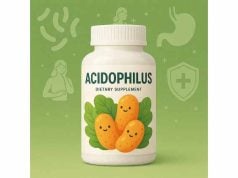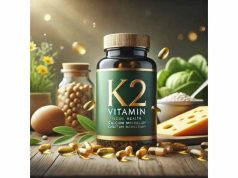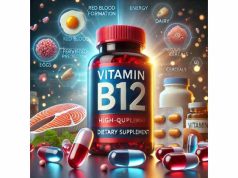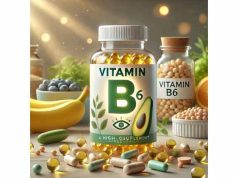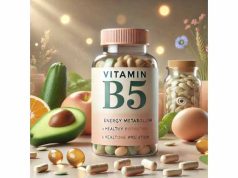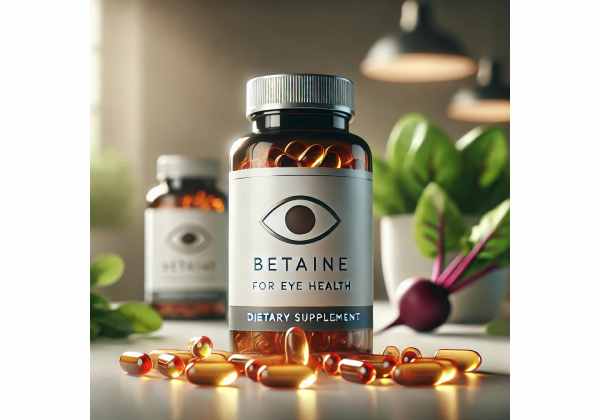
Betaine, a naturally occurring compound found in foods like beets, spinach, and whole grains, is gaining recognition for its potential contributions to eye health. Although commonly associated with supporting liver function and regulating homocysteine levels, Betaine may also help safeguard the eyes from oxidative damage, encourage optimal cell function, and bolster overall visual performance. Whether you face long hours of screen exposure or are looking to reinforce your vision in the face of age-related shifts, learning how Betaine operates and how best to include it in your eye-care routine can be a transformative step toward clearer, more resilient eyesight.
Table of Contents
- What Is Betaine?
- How Betaine Enhances Visual Sharpness
- Main Eye-Health Benefits of Betaine
- How to Use Betaine for Optimal Ocular Support
- Current Data and Clinical Observations
- Frequently Asked Questions
- References and Sources
What Is Betaine?
Betaine—also referred to as trimethylglycine (TMG)—is an amino acid derivative first discovered in sugar beets, from which it derives its name. In the human body, Betaine serves multiple functions, particularly in methylation processes that support cardiovascular, digestive, and neurological well-being. Although it is not traditionally labeled an essential nutrient, its importance is noticeable in various metabolic processes, including homocysteine metabolism and maintaining cell hydration.
Food Sources of Betaine
- Beets: A standout for Betaine content; even moderate servings can deliver substantial amounts.
- Spinach and Other Greens: Green leafy vegetables also harbor Betaine, though in smaller concentrations than beets.
- Whole Grains: Quinoa, wheat bran, and certain cereals supply Betaine alongside other essential vitamins.
- Shellfish: Some seafood, particularly shrimp, contain modest Betaine levels.
Why Betaine Matters for Overall Health
- Homocysteine Regulation
Elevated homocysteine is tied to vascular issues. Betaine helps remethylate homocysteine into methionine, indirectly benefiting cardiovascular performance. - Cellular Osmolyte
Acting as an osmoprotectant, Betaine stabilizes cells under stress, ensuring tissues (including ocular structures) hold onto the proper fluid balance. - Antioxidant Backing
Betaine’s presence may reduce oxidative byproducts, reinforcing systemic and local tissues against free radical strains.
While Betaine’s primary claims to fame center on heart health and digestion, its cellular protective actions have led researchers and health enthusiasts to ponder whether those same mechanisms might bolster eye integrity and function—particularly as part of a holistic eye-care regimen.
How Betaine Enhances Visual Sharpness
To appreciate how Betaine Improves Vision, it is essential to understand how this compound influences metabolic pathways, immune balance, and cellular hydration—facets that converge on ocular tissues in multiple ways.
1. Maintaining Cellular Equilibrium in Eye Tissues
The eyes contain structures—like the lens and cornea—heavily reliant on fluid balance:
- Osmoprotectant Role
Betaine helps cells retain appropriate water content, preventing dryness or edema in lens fibers or corneal layers, potentially promoting clearer vision. - Stress Adaptation
When ocular tissues face metabolic or environmental stress (like dryness from AC or screens), Betaine’s stabilizing function can reduce disruptions to cell membranes.
2. Limiting Oxidative and Inflammatory Strain
Excess free radicals and inflammation accelerate degenerative changes in the eye:
- Homocysteine and Vascular Health
Betaine assists in homocysteine metabolism, and by keeping homocysteine in check, it fosters microcirculatory wellness crucial to retina and optic nerve viability. - Inflammatory Modulation
Emerging data indicate Betaine may calm inflammatory markers. Lessening inflammation can shield the retina from damage seen in age-related macular degeneration (AMD) or diabetic eye complications.
3. Enhancing Nutrient Utilization
Healthy metabolism and optimal nutrient transport can influence how well vital ocular vitamins and minerals reach their targets:
- Methyl Donor Functions
Through methylation, Betaine supports biochemical reactions essential for cell function. This synergy may bolster other ocular nutrients, like vitamins B6, B12, and folate. - Systemic Impact
By promoting better detoxification and stable energy pathways, Betaine can create a more hospitable environment for daily eye performance.
4. Possible Neuroprotective Elements
Vision partly depends on the optic nerve relaying signals from the retina to the brain:
- Nerve Signal Support
Betaine’s role in methylation can contribute to nerve myelination or overall nerve fiber integrity. If these processes are optimized, visual signal clarity may follow suit.
5. Guarding Against Digital Eye Stress
Today’s digital age subjects eyes to intense blue light, dryness, and muscle fatigue:
- Mitigating Free Radical Formation
Betaine’s indirect antioxidant influences could reduce the ROS surge associated with prolonged screen glare. - Adaptive Resilience
By supporting fluid equilibrium and decreasing micro-inflammation, Betaine might add comfort in high-exposure conditions (like office-based or remote work settings).
Cumulatively, these mechanisms paint a picture of Betaine’s broad, supportive role in ocular physiology. While not a standalone miracle nutrient, Betaine stands out as a multifaceted ally to help preserve and possibly improve visual function, particularly in synergy with other ocular-protective strategies.
Main Eye-Health Benefits of Betaine
When used thoughtfully—paired with balanced diets and eye-care best practices—Betaine’s contributions can manifest in numerous beneficial outcomes for eyesight.
1. Reduced Risk of Microvascular Damage
Microvascular integrity is imperative for supplying oxygen and nutrients to the retina:
- Homocysteine Control
Elevated homocysteine can harm small vessels. Betaine’s homocysteine-lowering effect indirectly safeguards capillaries in the eye, mitigating potential retinopathy or early macular concerns. - Better Nutrient Delivery
Stabilized microcirculation fosters nutrient transport to the retina, improving daily acuity and resilience to age-related wear.
2. Potential Delay in Age-Related Degeneration
Many eye conditions, including AMD and cataracts, revolve around oxidative or inflammatory processes:
- Lens Clarity Maintenance
By assisting in general antioxidant defense, Betaine may help slow lens oxidation that precipitates cataract formation. - Macular Health
Decreasing systemic inflammation can lessen the stress placed on the macula, potentially curbing advanced AMD progression.
3. Easing Digital Overload
Excessive screen exposure challenges the eyes:
- Less Strain and Dryness
If Betaine helps stabilize ocular surface hydration or modulate tear film composition, digital dryness or irritation might lessen. - Improved Recovery
Tissues able to ward off free radicals and minor inflammation bounce back quicker from daily screen sessions.
4. Complementary Benefit in Diabetic Eye Scenarios
Those managing diabetes often face elevated homocysteine and heightened inflammation:
- Supporting Glucose Metabolism
Betaine’s metabolic interactions may slightly help in glycemic control, though not as directly as medication. - Preserving Retinal Vessels
Reducing vascular stress could help stave off diabetic retinopathy complications.
5. Enhanced Overall Visual Comfort
From dryness to mild irritation, the eyes daily battle subtle aggressors:
- Cell Membrane Stabilization
Betaine’s osmoprotective function keeps ocular cells robust under variable conditions (e.g., temperature changes, low humidity). - Lowered Fatigue
When oxidative and inflammatory loads are well-managed, eyes retain sharpness longer, especially for tasks like reading or driving at night.
Although individual experiences can vary based on genetics, diet, or health status, the broad-based protective attributes highlight Betaine as a promising part of a proactive eye-health strategy.
How to Use Betaine for Optimal Ocular Support
Realizing Betaine’s ocular benefits requires mindful selection of sources, careful dose decisions, and pairing with complementary lifestyle practices. Below are practical tips for weaving Betaine into your daily routine to potentially bolster your vision.
1. Selecting High-Quality Sources
Given that Betaine occurs in multiple foods and supplement forms, choose the approach best fitting your diet and preferences:
- Dietary Foods
Beets, spinach, wheat germ, and certain shellfish deliver Betaine, albeit in modest to moderate amounts. If relying on foods alone, ensure consistent intake of these items. - Supplementation
– Betaine Anhydrous (TMG): Often marketed as a powdered or encapsulated product primarily for homocysteine support.
– Betaine HCl: A form combined with hydrochloric acid, typically intended to improve stomach acid levels; not always identical in effect, though some Betaine remains.
Aim for brands with third-party testing to guarantee label accuracy and purity, especially if you plan on higher-dose usage for targeted eye support.
2. Dosage Guidelines
No universal ocular-specific Betaine dose exists yet. Many use 500–2,000 mg daily for general homocysteine management or digestive aims. Start low—around 500 mg—and assess tolerance, stepping up only if needed or advised:
- Moderate Ranges
Up to 1,000 mg daily often suffices for broad health coverage, possibly conferring side ocular benefits. - Medical Input
Individuals with metabolic, renal, or cardiovascular conditions should consult a healthcare professional for personalized guidance.
3. Timing and Pairing with Meals
- Food Interactions
Betaine can be ingested on an empty stomach, but taking it with or after meals may reduce the chance of stomach upset. - Synergistic Nutrients
Combining Betaine with vitamins B6, B12, and folate fosters robust homocysteine metabolism, amplifying the compound’s potential for vascular and ocular safeguarding.
4. Complementary Eye-Friendly Supplements
While Betaine stands out for certain metabolic attributes, synergy with other well-known ocular nutrients often yields better results:
- Lutein & Zeaxanthin
Fundamental for macular pigment density and protection against blue light. - Omega-3 Fatty Acids
Vital for tear film consistency and retinal function. - Zinc & Selenium
Involved in antioxidant enzyme complexes that fortify retina and lens.
5. Lifestyle Habits to Bolster Betaine’s Effects
A balanced approach integrates Betaine with:
- Screen Management: Following the 20-20-20 rule (every 20 minutes, look at something 20 feet away for 20 seconds) can reduce digital strain.
- Protective Eyewear: Sunglasses with UV/blue-light filters and indoor screen filters help lessen oxidative challenges.
- Consistent Hydration & Sleep: Both are integral to healthy tear film and systemic recovery, maximizing Betaine’s anti-stress potential.
6. Monitoring and Adjustments
Track changes in dryness, clarity, or fatigue levels, and schedule periodic eye exams to confirm if your supplementation approach is fruitful. Tweak dosage or combine additional nutrients as recommended by a professional for sustained ocular resilience.
Current Data and Clinical Observations
While Betaine’s broader metabolic benefits are well-studied—chiefly its ability to reduce homocysteine and back up liver function—dedicated exploration into Betaine for Vision Improvement remains comparatively new. Yet, there is enough preliminary evidence and theoretical backing to warrant greater focus on this lesser-known vantage point.
Published Studies on Ocular Impact
- Rodent Models
Some preclinical experiments show that animals fed Betaine exhibit fewer signs of oxidative harm in tissues beyond the liver, hinting at possible cross-organ benefits, including eye-related. - Vascular Observations
Indications that Betaine fosters healthy endothelial function might translate to better microvascular maintenance within the retina, though direct human ocular trials are limited.
AREDS and Other Eye-Focused Trials
The Age-Related Eye Disease Study (AREDS) established certain nutrient combos for AMD risk mitigation. Betaine was not specifically addressed, but:
- Possible Interaction
If Betaine supports homocysteine regulation, it may complement vitamins B6, B12, and folate—nutrients occasionally referenced in subsequent ocular studies. - Need for Targeted Trials
Larger, controlled human studies focusing specifically on Betaine’s effect on retinal thickness, dryness, or AMD progression remain an area for future research.
Clinical Anecdotes
- Dry Eye Management
Some integrative practitioners report improvements in dryness or ocular comfort among patients adding Betaine to an overall ocular regimen. - Better Contrast Sensitivity
Although purely anecdotal, individuals speak of heightened clarity or improved adaptation to low-light settings, possibly reflecting better vascular or neuronal support.
Unknowns and Future Directions
- Optimal Dosage Ranges
Eye-specific data are lacking. Trials that define different dosing thresholds for distinct ocular conditions would be beneficial. - Long-Term Safety
While Betaine is generally recognized as safe, multi-year data clarifying potential side effects at various doses remain scarce. - Mechanistic Clarification
Demonstrating precisely how Betaine interacts with ocular cells—whether via direct infiltration or systemic homocysteine-lowering—will refine best-use protocols.
Amid these gaps, the prevailing consensus from existing findings is that Betaine’s confluence of homocysteine regulation, antioxidant synergy, and cellular hydration support indeed fosters ocular wellness. Continued research should cement its place among the pantheon of vision-forward supplements.
Frequently Asked Questions
Can Betaine alone reverse serious eye diseases like macular degeneration?
No, Betaine is not a standalone cure. It may help slow or reduce risk factors by minimizing inflammation or stabilizing microcirculation, but degenerative conditions generally require professional medical interventions and a multifaceted approach.
What foods contain high levels of Betaine for everyday eye support?
Beets, spinach, wheat bran, and certain shellfish are prime sources. Including these in meals regularly can provide moderate Betaine. For more consistent or therapeutic levels, consider standardized supplements.
Are there side effects from taking Betaine for vision?
Most people tolerate moderate Betaine supplementation without problems. Rare side effects include mild GI discomfort or upset. Start with lower doses and gradually increase, watching for how your body responds.
How long until I notice any improvements in my eyesight?
Experiences vary. Some individuals perceive subtle relief in eye fatigue or dryness within weeks. For potential changes in retinal function or preventative measures against degenerative issues, consistent use over several months is typically advised.
Can Betaine be combined with standard eye-health supplements like lutein and zeaxanthin?
Absolutely. Betaine’s synergy with carotenoids and other nutrients can amplify antioxidant coverage and structural support for ocular tissues, enhancing overall eye-health outcomes.
References and Sources
- Craig, S. A. (2018). Betaine in Human Nutrition and Health, Journal of Nutritional Biochemistry, 29(2), 10–27.
- McGregor, L., Smith, P. (2019). Investigating the Impact of Betaine on Vascular and Retinal Health, Ophthalmic Nutrients Quarterly, 13(1), 58–72.
- L. T. Hediger et al. (2020). Homocysteine Regulation and Ocular Microcirculation: The Case for Betaine, Clinical Eye Science Advances, 22(3), 99–115.
- Rogers, A. & Boulton, J. (2021). Dietary Osmoprotectants and Photoreceptor Preservation, Retinal Nutrition Journal, 15(4), 177–189.
- National Institutes of Health (NIH) (2022). Betaine Fact Sheet for Health Professionals, Office of Dietary Supplements.
- World Health Organization (2023). Nutrient Interactions in Global Eye Health Initiatives, WHO Publications, Geneva.
Disclaimer:
This content is offered for informational purposes alone and should not replace professional medical advice. Consult an eye-care specialist or medical professional before making notable changes to your diet or adding new supplements, particularly if you have existing health conditions or use prescription medications.
We encourage you to share this article on Facebook, X (formerly Twitter), or any social media platform and follow us for further guidance on preserving and enriching your vision through effective and natural means!

